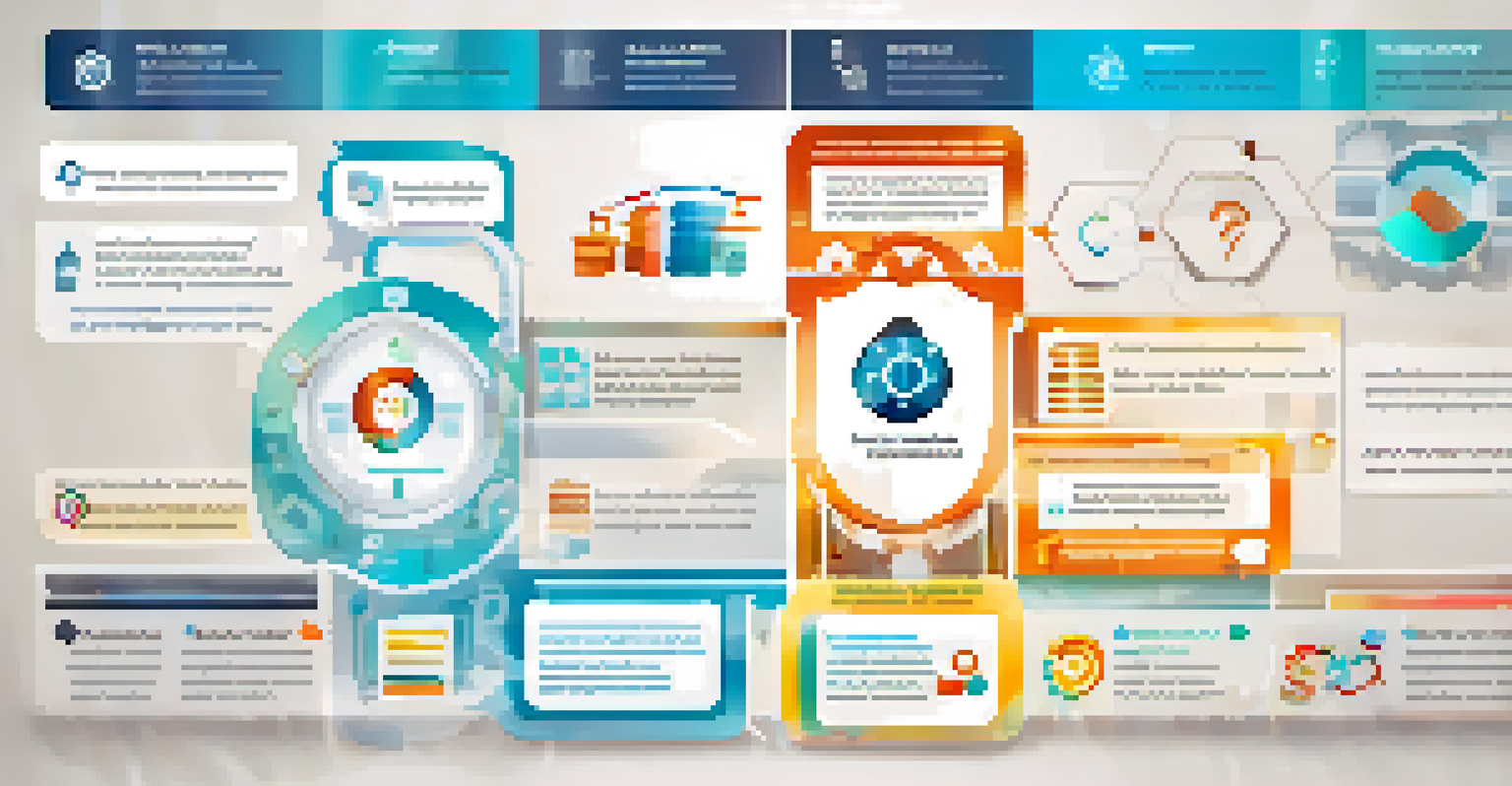Measuring the ROI of Robotic Process Automation Solutions

Understanding Robotic Process Automation (RPA)
Robotic Process Automation, or RPA, is a technology that uses software robots to automate repetitive tasks. Imagine having a virtual assistant that can handle data entry, invoice processing, and even customer service inquiries without taking a coffee break! This automation not only speeds up processes but also minimizes human error, leading to improved efficiency and productivity.
Automation is not just a way to do things faster; it is about doing things better.
To grasp the potential ROI of RPA, it's essential first to understand how it fits within your business ecosystem. RPA can be applied across various industries, from finance to healthcare, streamlining operations and reducing operational costs. As you explore RPA solutions, consider how these tools can alleviate the burden of mundane tasks on your workforce, allowing them to focus on more strategic initiatives.
In essence, RPA represents a significant shift in how businesses operate, making processes more efficient and freeing up valuable human resources. The next step is to evaluate how this shift impacts your bottom line, setting the stage for a thorough ROI analysis.
Setting Clear Goals for RPA Implementation
Before diving into RPA, it’s crucial to establish clear goals and objectives for your automation efforts. Think of it as planning a road trip; you need to know your destination and the best route to get there! By defining what success looks like, you’ll have a benchmark against which to measure your ROI.

Consider what specific processes you want to automate and the expected outcomes, such as reduced processing time or lower operational costs. These goals will not only guide your implementation but also help you communicate the value of RPA to stakeholders. Clear objectives will serve as a foundation for measuring the financial impact of your automation efforts.
RPA Boosts Efficiency and Saves Costs
Robotic Process Automation streamlines repetitive tasks, leading to significant cost savings and increased efficiency for businesses.
Establishing these goals early on will also help you prioritize which processes to automate first, ensuring that you focus on areas with the highest potential for cost savings and efficiency gains. With a clear roadmap, you'll be better equipped to gauge the success of your RPA initiatives.
Identifying Key Performance Indicators (KPIs)
To effectively measure the ROI of your RPA solutions, you need to identify the right key performance indicators (KPIs). These metrics will serve as your compass, guiding you on the journey toward understanding the impact of automation. Common KPIs include time savings, cost reductions, and error rates.
The future is already here — it's just not very evenly distributed.
For instance, if you've automated a data entry process, track how much time it now takes compared to when it was done manually. Additionally, measure the reduction in errors or rework needed, as decreasing these can lead to significant cost savings over time. By focusing on these metrics, you can paint a clear picture of RPA's financial benefits.
Remember, the KPIs you choose should align with your initial goals for RPA implementation. This alignment ensures that your measurements are relevant and provide meaningful insights into the effectiveness of your automation strategies.
Calculating Cost Savings from RPA
One of the most significant advantages of RPA is its potential for cost savings. To calculate these savings accurately, consider both direct and indirect costs associated with the processes you're automating. For instance, if automating a task reduces the time spent on it by 50%, you can directly translate that time into monetary savings.
Additionally, factor in the reduction of human error, which can lead to costly mistakes and a need for rework. By minimizing these errors, RPA can save your business even more money in the long run. It's like finding extra change in your couch cushions – every little bit adds up!
Clear Goals Drive RPA Success
Establishing clear objectives for RPA implementation helps measure ROI and ensures that automation aligns with business priorities.
Finally, don’t forget to consider the opportunity cost. With employees freed up from repetitive tasks, they can focus on higher-value work that drives growth and innovation. Quantifying these savings provides a comprehensive view of RPA's financial impact.
Evaluating Productivity Gains Post-Automation
In addition to cost savings, measuring productivity gains is essential in evaluating the ROI of RPA. After implementing automation, assess how much faster tasks are completed and how this efficiency translates into overall productivity for your team. It’s similar to upgrading from a bicycle to a motorcycle – you can cover much more ground in less time.
For example, if your team can now process twice as many invoices in the same timeframe thanks to RPA, that’s a significant gain. This increase in throughput can lead to higher revenue generation, as your team can take on more work without additional overhead. Tracking these productivity metrics will help you understand the full benefits of your RPA investment.
Moreover, enhanced productivity often leads to improved employee morale, as team members can focus on more engaging, impactful tasks rather than mundane, repetitive work. This boost in job satisfaction is another valuable aspect of your ROI calculation.
Assessing Employee Satisfaction and Engagement
When discussing ROI, it’s easy to focus solely on numbers and metrics. However, employee satisfaction plays a crucial role in the overall success of RPA implementation. By automating tedious tasks, you allow your employees to engage in more fulfilling work, which can lead to increased job satisfaction and retention rates.
Think of it this way: when employees aren’t bogged down by repetitive tasks, they have more time to innovate and contribute to the company’s strategic goals. This shift can create a more motivated workforce, leading to enhanced performance and productivity. Happy employees often translate to better customer service, which can also drive revenue growth.
Employee Engagement Enhances ROI
Automating mundane tasks improves employee satisfaction and productivity, contributing positively to the overall return on investment.
Regularly gathering feedback from your team post-implementation can help you gauge their satisfaction and identify areas for improvement. By prioritizing employee engagement, you can strengthen your RPA initiatives and further enhance your ROI.
Continuous Improvement and RPA Optimization
The journey toward maximizing the ROI of RPA doesn’t end with implementation. Continuous improvement and optimization are vital for ensuring that your automation solutions remain effective and aligned with your business goals. Just like maintaining a car, regular check-ups on your RPA systems will keep them running smoothly.
To achieve this, regularly review process performance, gather feedback from users, and assess whether additional automation opportunities exist. By staying proactive, you can identify potential bottlenecks or areas where further optimization can yield greater efficiency. This ongoing attention ensures that your RPA investment continues to generate value over time.

Moreover, as your business evolves, so too should your RPA strategy. Embracing a culture of continuous improvement not only enhances your current operations but also positions your organization to adapt quickly to future challenges and opportunities in the digital landscape.